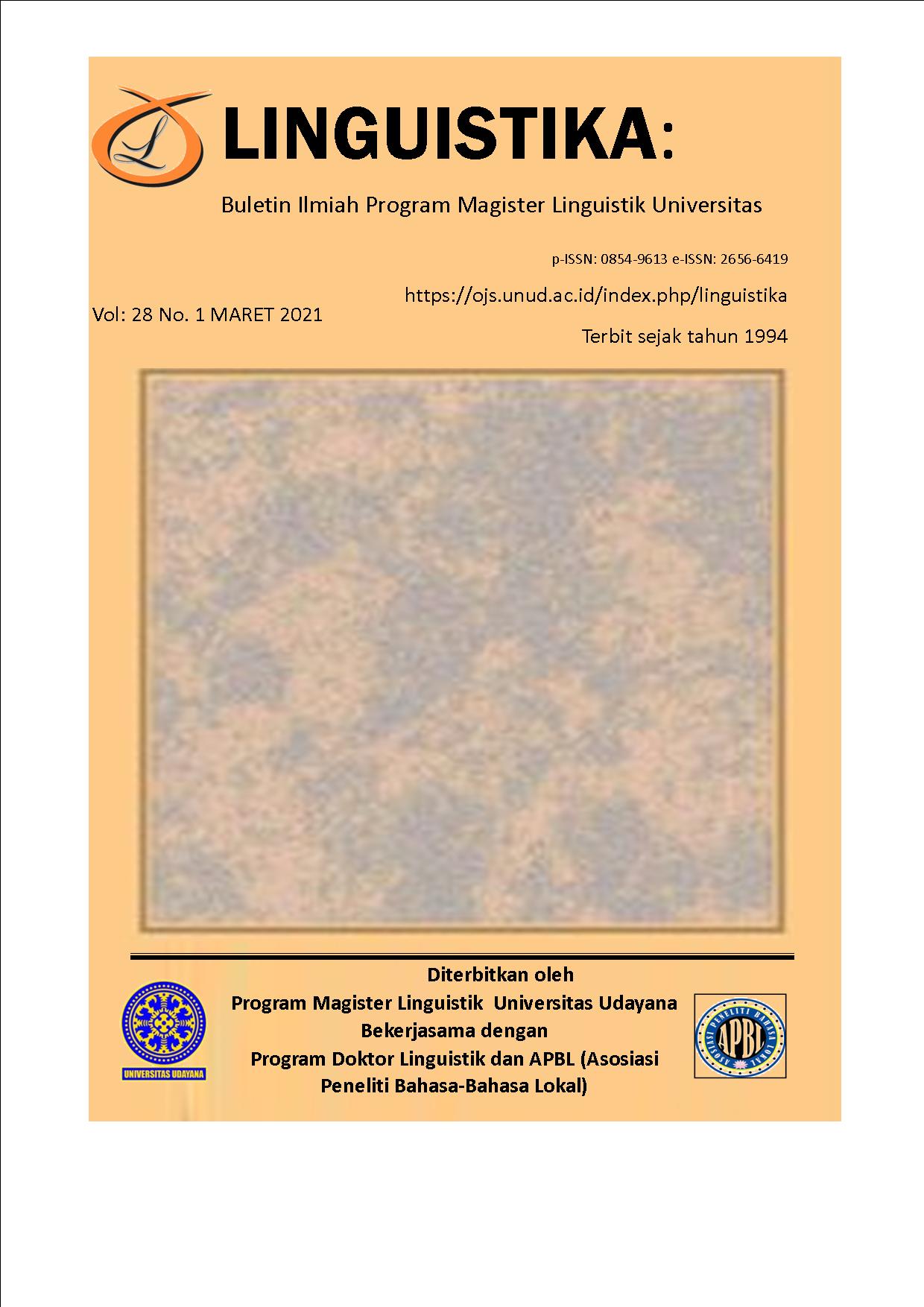Analysis on the Syntax and Semantics of Get and Dapatkan
Abstract
This study aims at contrasting get and dapatkan covering the structure, syntactic valence, and semantic parameters. Get is analysed along with its synonym make, find, become, and understand as well as dapatkan, represented by mendapatkan, and its synonyms mencapai, menerima, menemukan, and mengambil. Dapatkan needs to transform into mendapatkan to express formality and is more frequently used than dapatkan. By using distributional and identity methods and applying the theory of verbs and their satellites and semantic parameter, this study reveals that the structures only influence the differences of the verbs’ syntactic valence whereas the meanings contribute to the similarities and differences of the verbs semantic parameters. In terms of valence get can be monovalent (S+v+AD), make is trivalent (S+v+AD+PO), find is bivalent (S+v+O), become is bivalent (S+v+ND), and understand is monovalent (S+v). Indonesian verbs, mendapatkan, mencapai, menerima, menemukan, and mengambil are all bivalent with the basic construction S+v+O. The semantic aspects are analysed by applying transitivity parameters and this is affected by the meaning and status of the verb, either state or action. Get and its synonyms show lower transitivity than dapatkan, which is represented by mendapatkan, with its synonym. The verbs presenting low degree of transitivity are get, make, find, become, understand, menerima, and menemukan, whereas the high transitivity is shown by the verbs mendapatkan, mencapai, and mengambil.













